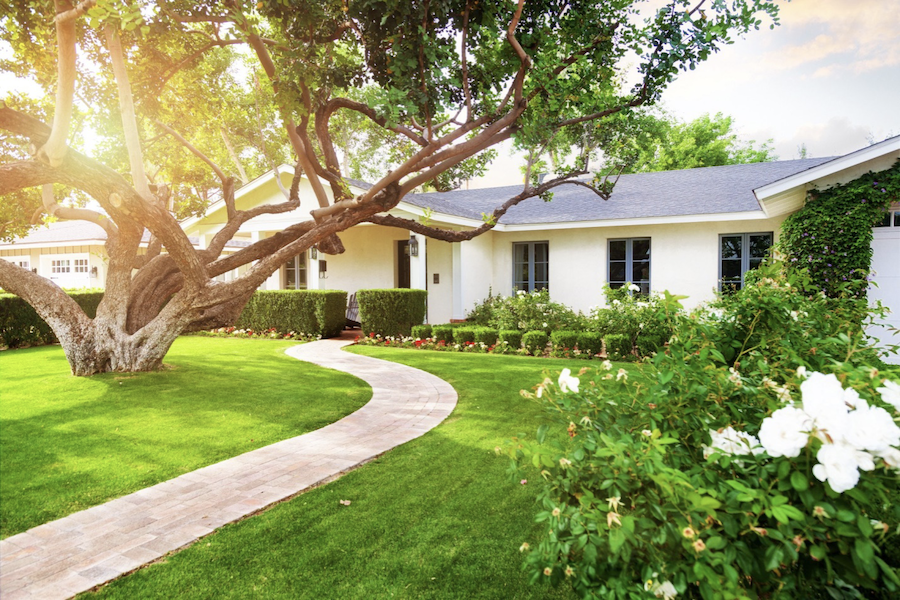Did you know that investing in your landscaping can raise your home value?
Home value aside, by investing in your curb appeal, you’re also improving your environmental impact and increasing your own energy efficiency.
It’s all win-win, really.
We’re here to help make that happen. Keep reading for our favorite green landscaping tips.
1. Choosing Low-Maintenance Greenery
For homeowners, there are several low-maintenance greenery options to choose from when landscaping their property. One such option is to incorporate native plants, like ferns, grasses, and wildflowers, as these are naturally adapted to the climate and require minimal care.
Low-maintenance greenery like moss and succulents are the perfect addition to container gardens, as they only require occasional watering. To ensure proper drainage, make sure to leave some open areas in the mulch or soil for the water to escape.
2. Choosing the Right Native Plants
Growing the right native plants is one of the best landscaping tips for homeowners. These plants require very little upkeep and are adapted to our region’s climate. Their deep root systems help keep the soil healthy and stop erosion by capturing moisture and nutrients.
Additionally, native plants are also more attractive to beneficial wildlife such as butterflies, birds, and honeybees.
3. Utilizing Rainwater for Irrigation
This is an economical and eco-friendly way to keep the beautiful lawn healthy and vibrant. Collecting rainwater can be done by placing a barrel or container beneath a downspout. Collected rainwater can also be hooked up to a drip irrigation system or other overhead spray irrigation system.
Installing a rain garden near the downspout is also a great way to nurture local wildlife while managing runoff from the roof.
4. Creating a Compost Area
Composting helps reduce waste and provides an endless supply of dark, crumbly compost for your garden and flower beds. Start by creating a 3-foot square area with four thin wooden boards. It should be approximately 1-2 feet deep with your compost piled and stirred regularly. Add items such as food scraps, leaves, and yard cuttings in layers, making sure to add equal parts “brown” and “green” materials.
5. Natural Pest Control Strategies
For natural pest control, focus on creating a balanced ecosystem with beneficial organisms and plants that repel unwanted pests. Introduce beneficial organisms such as ladybugs, which will eat the pests in your garden or yard.
Maintain your flowers and plants with natural fertilizer that can provide the necessary nutrients. You can also use mulch around plants, which helps to retain water and prevent weeds. Avoiding chemicals and managing your landscape with simple, natural strategies will help promote a healthy environment and save you money in the long run.
Have a Green Landscaping for Your Lawn
Green landscaping is a great way to save money and appreciate natural beauty. By using eco-friendly materials, best practices, and natural pest deterrence methods, you can keep your lawn healthy and beautiful. So why not start a green landscaping project today? You’ll be glad you did.
Is this interesting? Read the rest of our blog to learn more!

